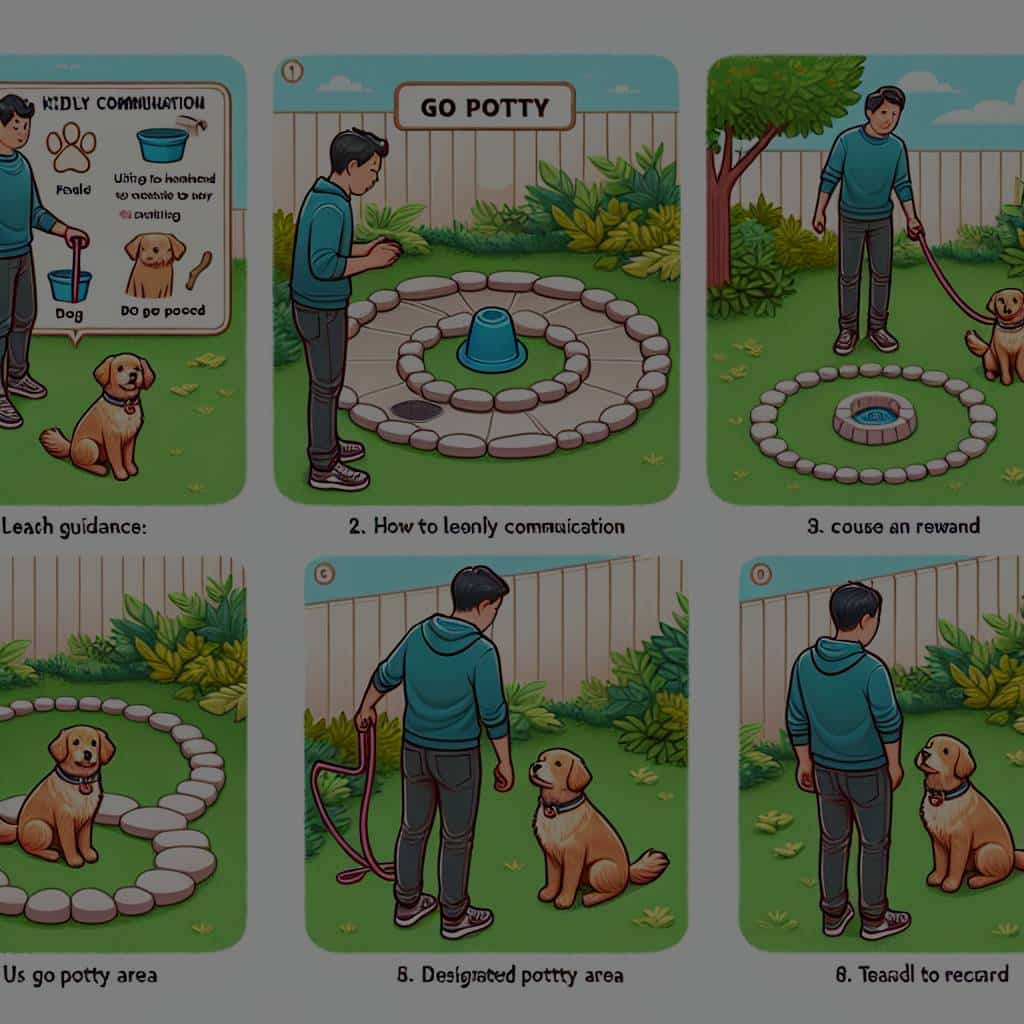How to Train a Dog to Use a Designated Potty Area in a Yard?

As a dog owner, you may have spent countless hours trying to figure out the best way to keep your yard clean and free from dog poop. The answer lies in designating a specific potty area and training your dog to use this space. This not only keeps your yard clean but also makes poop cleanup more manageable. In this article, we provide step-by-step guidance on how to train a dog to use a designated potty area in a yard.
Identifying a Suitable Potty Area in Your Yard
Before you begin training your dog to use a specific potty area, you must first identify a suitable spot in your yard. The spot you pick will play a critical role in the success of this training exercise.
In the same genre : What’s the Best Way to Prepare Your Dog for Therapy Work?
When selecting a potty area, consider factors such as convenience, privacy, and size of the area. The spot should be easy to access at all times, especially during inclement weather. Additionally, dogs appreciate some privacy when doing their business. Therefore, a secluded spot might be more appealing to your pup. The size of the potty area should be large enough for your dog to walk around, sniff, and select the perfect spot.
Once you identify the designated potty area, mark it off using visual cues such as a fence, stones, or potty post. This will help your dog understand the boundaries of the potty area.
Have you seen this : How to Provide Enrichment for a Pet Hamster Without Overcrowding the Cage?
Establishing a Routine for Potty Breaks
Routine and consistency are key when training your dog to use a designated potty area. Dogs, like humans, thrive on a predictable schedule. Establishing a routine will make it easier for your dog to understand when and where it’s acceptable to relieve themselves.
Take your dog out to the potty area at regular intervals throughout the day. This could be first thing in the morning, after meals, after playtime, and before bedtime. Remember, puppies may need to go out more frequently due to their smaller bladders.
When it’s time for a potty break, lead your dog on a leash to the designated area. This will reinforce the habit of going to this specific spot for bathroom breaks.
Using Positive Reinforcement to Encourage Your Dog
Using positive reinforcement is a proven method to successfully train dogs. This involves providing a reward when your dog uses the designated potty area, encouraging them to repeat the behavior.
Each time your dog successfully relieves themselves in the correct spot, immediately reward them with a treat, praise, or a quick game of fetch. This creates a positive association with the potty area, making them more likely to return to it in the future.
Remember to be patient and consistent. It may take some time for your dog to understand and get comfortable with the new routine. Don’t punish your dog for mistakes, as this may create fear and confusion. Instead, redirect them to the designated potty area and reward them for correct behavior.
Keeping the Potty Area Clean
Maintaining cleanliness in the designated potty area is crucial to keep your dog using it. Dogs do not like to go in areas that are heavily soiled. A dirty potty area may discourage your dog and lead them to seek other places in the yard to do their business.
Make it a habit to clean up after your dog right away. This not only keeps the space clean and odor-free, but also reduces the risk of spreading diseases.
Consider installing an outdoor waste station near the potty area for convenient disposal of dog poop. Regularly sanitize the potty area to keep it clean and inviting for your dog.
Gradually Transitioning to Off-Leash Potty Breaks
Once your dog consistently uses the designated potty area, you can gradually start training them to go there without a leash. This is the final step in training your dog to independently use their potty spot.
Start by letting your dog off the leash while you accompany them to the designated area. Over time, begin sending them out alone while you supervise from a distance.
Remember, this transition should be gradual and based on your dog’s comfort level and reliability. It’s normal for there to be occasional accidents during this transition phase, but don’t get discouraged. With consistency, patience, and positive reinforcement, your dog will soon be using their designated potty area in the yard independently.
Selecting the Right Materials for the Potty Area
When it comes to creating a designated potty area for your dog, the choice of materials is crucial. The comfort of your outdoor dog and ease of maintenance are the two primary factors to consider.
A popular choice among dog owners is pea gravel. It’s not only comfortable for dogs to walk on but also easy to clean. Furthermore, pea gravel doesn’t retain odor as compared to other materials, thus keeping the potty area fresh. For added convenience, install an artificial turf as it offers easy clean-up and doesn’t turn muddy in rainy weather.
However, it’s important to note that every dog has its preferences. What one dog might find comfortable, the other might not. So, it’s wise to observe your dog’s preferences during walks. Do they prefer to poop on grass, gravel, or dirt? Use this information to select the appropriate material for the designated area.
To prevent your dog from digging up the potty area, consider laying down a durable ground cover under the pea gravel or artificial turf. This will not only discourage digging but also provide additional odor control.
Dealing with Setbacks in Potty Training
In the process of potty training your dog to use the designated area, you might encounter a few setbacks. This is especially true if you’re training an older dog with pre-established habits.
These setbacks could come in the form of your dog relieving themselves outside the designated area despite consistent training. It’s important not to get discouraged by these setbacks. Training takes time and each dog will adapt to the new routine at their own pace.
In such situations, it is essential to reinforce the training rather than punish the dog for mistakes. Reprimanding or scolding the dog for doing their business outside the potty spot could confuse them and delay the training process. Instead, calmly lead them back to the designated area and remind them that this is the proper spot for their bathroom needs.
Utilize positive reinforcement by rewarding the dog when they get it right. This could be in the form of a treat, praise, or a game. This will encourage them to keep doing it right and gradually, the habit of using the designated potty area will form.
Conclusion
Training a dog to use a designated potty area in your yard is a task that requires consistency, patience, and positive reinforcement. Remember, it’s not a process that occurs overnight. It may take a few weeks or even months, depending on your dog’s age, habits, and temperament.
However, once your dog is successfully trained, it’ll be a huge relief not only for you but also for your beloved pet. It provides them with a specific spot where they can comfortably do their business without any restrictions and, for you, it results in a cleaner yard and a more manageable cleanup.
So, it’s worth investing your time and effort in this training process. With the right approach, patience, and a little bit of understanding, you can successfully train your dog to use the designated potty area in your yard. Good luck!
